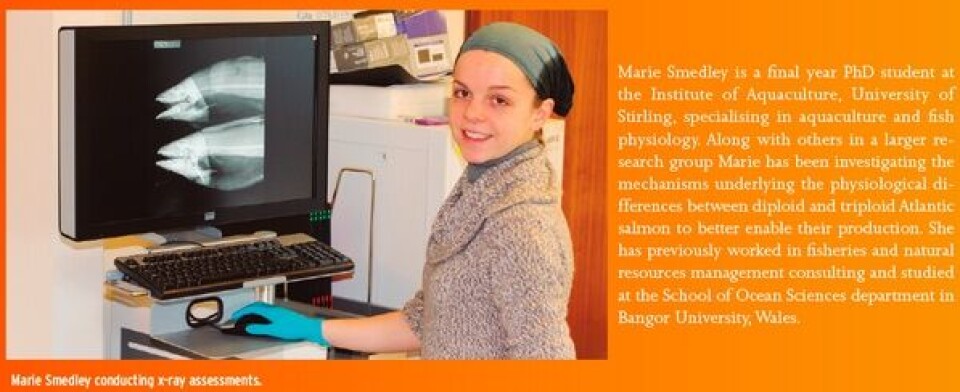Dietary enrichment to address triploid Atlantic salmon malformations and improve performance
By Marie Smedley
Aims Induction of triploidy is currently the only commercially acceptable means of achieving sterility in fish, including salmonids. Triploids may also hold significant industrial benefits due to their accelerated growth, which has frequently been observed in freshwater. However, triploid populations are also known to be more prone to jaw and vertebral malformations compared to diploids. Alongside Dr John Taylor and Professor Herve Migaud at the University of Stirling (in collaboration with BioMar and Marine Harvest Scotland) I have been investigating the use of dietary nutrient enrichment to improve triploid performance.
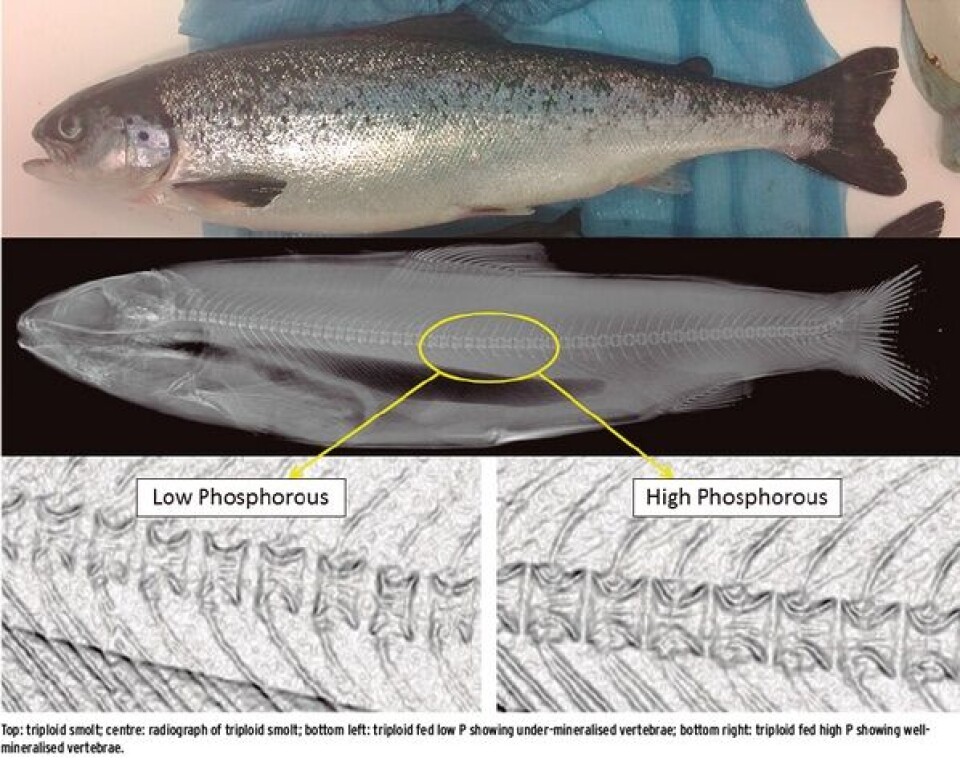
Summary Historically, attempts at triploid Atlantic salmon production have used standard diploid production regimes, which are now known to be inadequate for optimal performance. Suboptimal environmental conditions, especially temperature and oxygen, clearly impact triploid performance and more stringent environmental regulation has brought triploid survivability on a par with diploids. It is now also known that dietary enrichment of histidine stops cataract development in triploids. In these studies we have shown that dietary enrichment in seawater ongrowing reduces appearance of malformations and improves growth. Important advances were also made in the improvement of freshwater diets – where we know these malformations manifest themselves. Through higher phosphorous inclusion and the provision of probiotics we have shown reductions in malformations to the low levels found in diploids as well as a complete mitigation of severely malformed individuals.
Why use triploids as opposed to diploids? As a sterile fish, triploids hold potential to reduce known adverse effects of sexual maturation on flesh quality and disease resistance. Furthermore, they have shown up to 25% faster growth in freshwater than diploids and also smolt earlier, which could have great economic benefits by reducing the production cycle length. In addition, one of the main advantages of inducing sterility is to mitigate the potential environmental impact of escapees on local salmon populations. Studies have shown that triploid Atlantic salmon cannot reproduce and only a few males show signs of maturation but produce non-viable sperm. Implementing triploid production could result in enhanced productivity and profitability whilst preserving wild stocks, thus making the salmon industry more environmentally friendly and more sustainable overall.
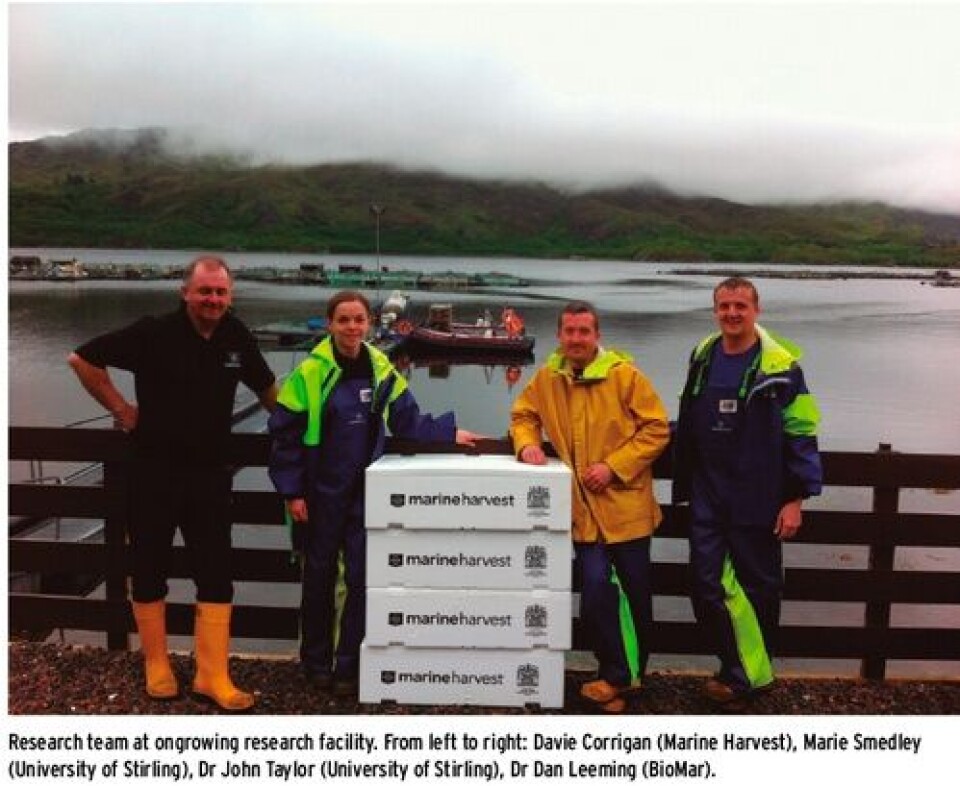
What feed components were found to improve triploid performance? Our studies have shown inclusion of higher dietary phosphorous benefits triploid growth and skeletal development in both fresh and saltwater. Improvement of saltwater diets in triploids raised the fish harvest weights by 8% compared to diploids and triploids reared on standard commercial diets. At harvest we also observed an increase in fish classed as “superior” and a reduction in downgrading. X-radiography analyses performed at smolt transfer and harvest also indicated that deformities were mainly present in freshwater. Investigations into higher dietary phosphorous inclusion in freshwater demonstrate accelerated growth in triploid parr, whereas it impeded growth in diploids. Triploids appear to require higher dietary phosphorous to mineralise their skeleton to the same level as diploids, which is expected given their already faster growth. No severely malformed individuals (with at least 10 individual deformed vertebra) were observed in triploids fed high dietary phosphorous as opposed to 7% in triploids fed standard levels. The importance of dietary phosphorous for effective mineralisation in triploids was confirmed by improved assimilation of whole body analysis of key macro- (eg phosphorous, calcium) and micro-nutrients (eg vanadium and zinc) which are important in bone development with higher dietary phosphorus. Expression of key genes associated with phosphorous regulation in bone were down-regulated in triploids fed low phosphorous as well as a down-regulated in mineralisation genes in triploids fed higher phosphorous. This indicates triploids fed higher dietary phosphorous have adequate levels of mineralisation whereas triploids fed low phosphorous diets require more.
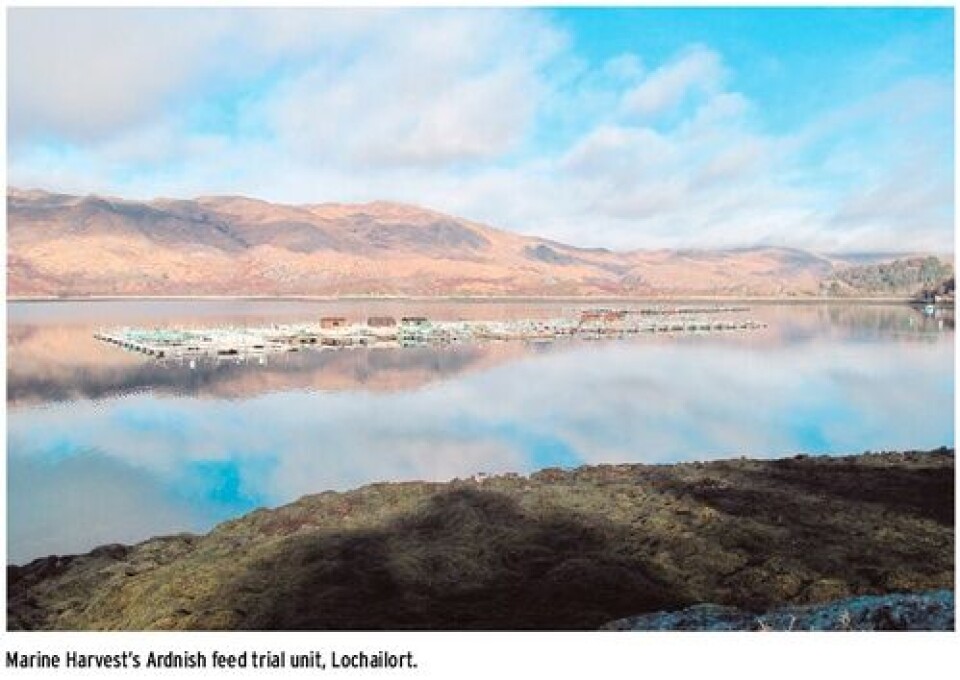
Why is phosphorous so important to triploid development? Phosphorous, alongside calcium, makes up the bone mineral in fish skeleton and scales, and is also important for many other cellular structures – such as DNA, RNA and cell membranes – as well as in processes such as energy cycling. Unlike calcium, phosphorous is not readily available in the aquatic environment and must be met by the diet. Triploids have larger and fewer cells, as well as accelerated growth, which is known to increase dietary requirements. Furthermore, recent studies have shown altered gut morphology, such as shorter relative gut length and fewer pyloric caeca, and this may imply a reduced digestive capacity and thus an increased need for available nutrients. Increased prevalence of malformations is indicative of poor availability of nutrients involved in skeletal mineralisation. The differences in physiology between diploids and triploids indicate their nutritional dietary requirements may be higher, and phosphorous is particularly important for growth and metabolism.
Are there other ways to improve phosphorous availability in triploids? Studies investigating increased dietary phosphorous fed to triploids during only the early life stages in freshwater did not have the same benefits as feeding for the entire freshwater cycle. In another study, diploid and triploid fish were fed either a standard or enriched diet in saltwater ongrowing, following an enriched phosphorous diet in freshwater. The occurrence of skeletal malformations was similar between triploid dietary treatments. This indicated freshwater development is most critical for phosphorous enrichment and may not be essential for ongrowing if this is initially provided. In addition it may also suggest additional nutrient requirements are lacking and that phosphorous by itself may not be enough to completely remove skeletal malformations. We have also investigated the use of a probiotic in freshwater development and reported very promising results. Feeding a probiotic throughout freshwater development eradicated the increased malformation prevalence that we normally see in triploids, with triploids actually displaying fewer skeletal malformations compared to diploids fed a commercial diet. In addition triploids fed probiotic diets demonstrated fewer skeletal malformations than triploids fed a high phosphorous inclusion and grew equally if not better than their counterparts fed higher or standard phosphorous inclusion.
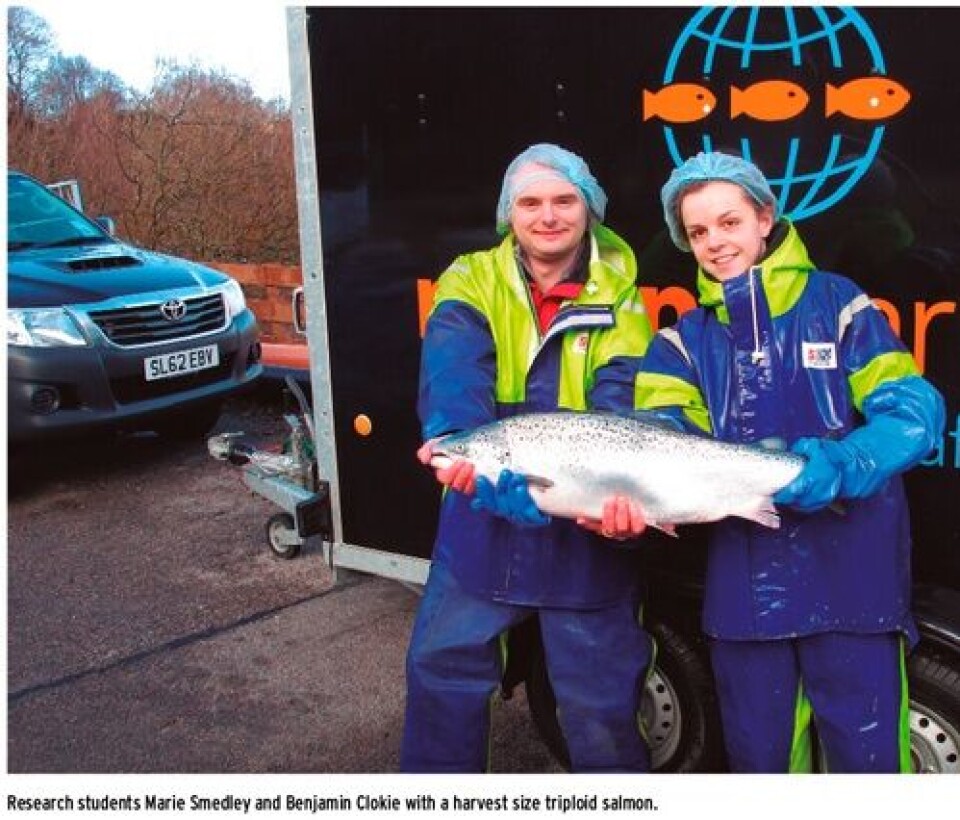
Is the use of probiotics as a tool to mitigate malformations new? The mechanisms of malformation development with inclusion of probiotics are largely unknown but have been tested on other marine fish with positive results. With the known differences in gut morphology between diploids and triploids it is possible that the inclusion of probiotics facilitates important nutrient assimilation, including assimilation of phosphorous. It has also been implicated that uptake by the intestinal mucosa may be involved in regulating gut inflammation. The use of this probiotic was tested for the first time in salmon triploids and our results clearly show that this warrants further research.
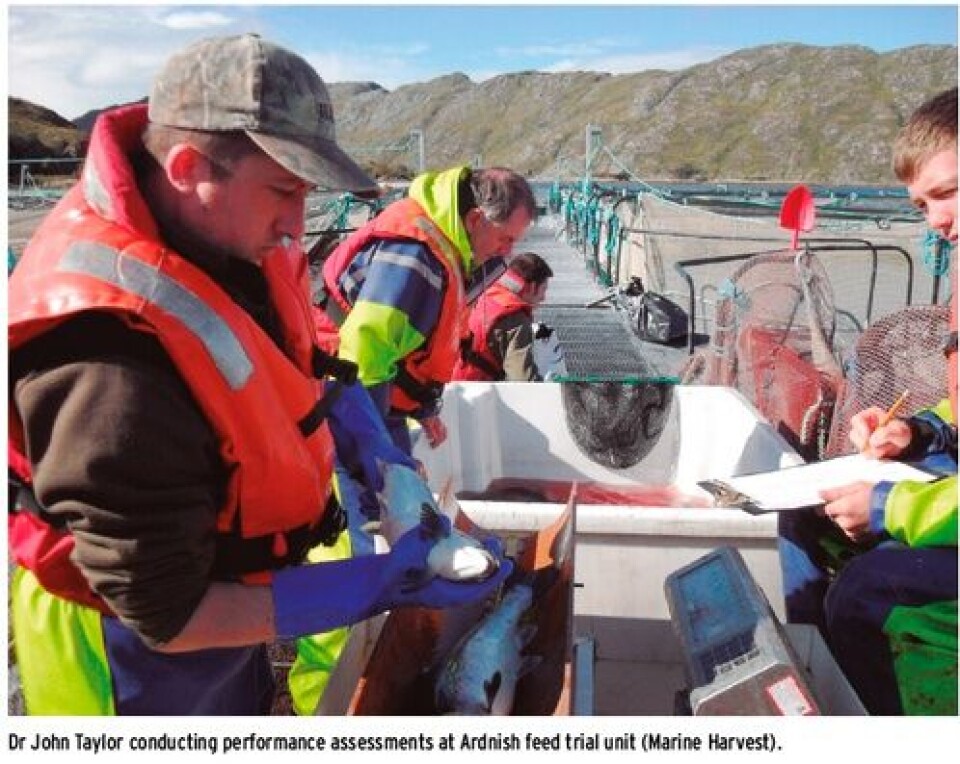
Are triploid skeletal malformations a thing of the past? Triploid Atlantic salmon should be treated as a new species, and as for any new species, husbandry conditions must be fine-tuned to realise the true potential of the species while ensuring the highest welfare standards. Triploid salmon research is ongoing in the Reproduction and Genetics group at the Institute of Aquaculture, University of Stirling and is led by Professor Herve Migaud and Dr John Taylor and aims to unravel the underlying mechanisms behind physiological differences between diploid and triploid Atlantic salmon. My PhD studies are part of a larger project co-funded by Innovate UK and world leading salmon companies Marine Harvest and BioMar. Advances in triploid nutrition have seen promising improvements in performance and will enable triploid Atlantic salmon to be farmed to the same welfare standards as diploids while being produced more sustainably.
